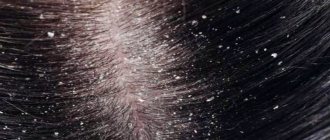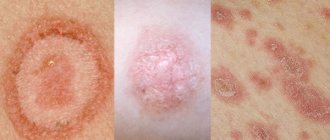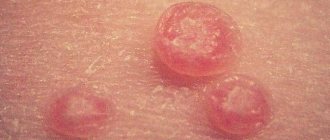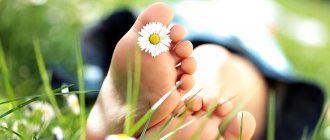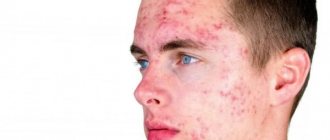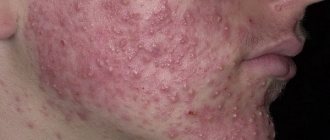Dandruff is a syndrome characterized by the flaking of particles of the epidermis of the scalp. And this happens at great speed. The scales are grayish-white, concentrated on the hair, and fall on clothing. What types of dandruff are there?
Seborrhea becomes a real problem for humans. But in order to proceed directly to treatment, it is important to know not only the causes, but also its varieties. A dermatologist can determine the form of the disease, taking into account the present symptoms.
What does dandruff look like?
White flakes, clearly visible on dark clothes, are nothing more than dandruff. It consists of scaly particles of keratinized skin, appears at the roots of the hair, and then easily falls off. Most often, the disease is provoked by the activity of the Malassezia fungus. It is present on the skin of every person, but only under certain conditions does it begin to multiply and cause dandruff.
When the fungus on the scalp becomes active, a person feels itchy. Depending on the reasons that caused the spontaneous reproduction of microorganisms and the characteristics of the sebaceous glands, seborrhea (this is what the disease accompanied by peeling is called) is divided into dry, oily, and mixed. It can also manifest itself in other forms.
Home care methods
External effects will be ineffective if the lack of nutrients that are necessary for the skin is not eliminated. Therefore, you should reconsider your diet. It is advisable to increase the amount of stewed fish and fresh salads seasoned with vegetable oil.
It is also important to eat grains rich in fiber. Doctors recommend starting courses of vitamin supplements in late autumn and early winter. This is necessary in order to support the body, which suffers from a lack of fresh greens, fruits or vegetables.
If the reason is insufficient subcutaneous blood circulation, then you can strengthen it with the help of foot baths. For this, procedures not only with warm water are suitable, but also quick dipping into containers of different temperatures.
If the skin of your feet is steamed, you can add a decoction of herbs that will help reduce peeling. Oak bark, chamomile, sage or St. John's wort are good options. It is advisable to alternate them throughout the course.
If the skin is insufficiently nourished, you can deliver beneficial substances using a foot mask. To do this, you need to purchase vitamins A and E at the pharmacy, which are sold in ampoules. You will also need 100 g of thick sour cream and 40-50 g of coconut oil.
Sour cream and butter are thoroughly mixed, then 1 bottle of medicine is added and the mixture is applied to the feet. The entire smeared surface is wrapped in cling film for 20 minutes so that the vitamins do not oxidize in the air. After completion, simply rinse off the substance with warm water.
Cleansing with paraffin. Depending on the affected area, you will need 2-3 thick suppositories. They are lit and gently dripped onto flaky skin so that the drop does not burn. When the piece hardens, cover the area nearby. Do not bring the candle very close to the skin, otherwise you may get burned. And after the entire affected area has disappeared, the procedure is repeated 1-2 more times. After this, the leg is wrapped in cling film, and after 1 hour it is thoroughly cleaned with fine pumice. The course consists of 5-10 procedures. When carrying out the last 4-5 wrapping procedures, it is advisable to use beeswax candles.
It is important to remember that this procedure can only be carried out if there are no scratches, otherwise the hot mass will corrode the wound.
Finding the cause of dryness and eliminating it is the best way to cure peeling feet. If you react early, you can avoid the cost of restoring the affected area. It is best to immediately consult a doctor who will help exclude serious diseases and skin infections from the group of causes.
Types of seborrhea
Seborrhea and dandruff are often considered synonymous. However, dandruff is only a symptom of seborrhea, the same as itching. Therefore, when considering the types of disease, we need to talk about seborrhea, and not dandruff.
Dry seborrhea
If there is a lack of activity in the sebaceous glands, dry seborrhea can occur. The reason is not only low sebum production, but also:
- stress, anxiety, psychological shocks;
- hereditary factors;
- hormonal disruptions (puberty or abnormalities in the functioning of the glands);
- use of incorrectly selected cosmetics, as well as cosmetic paints with ammonia;
- poor hygiene, excessively frequent hair washing and blow-drying;
- lack of vitamins (this affects the general health and functioning of the glands).
A deficiency of sebum contributes to the appearance of inflammatory processes on the scalp, which provoke the proliferation of Malassezia fungi. Symptoms of dry seborrhea:
- discoloration, dryness and brittleness of hair;
- formation of cracks in the epidermis;
- the appearance of large scales that quickly peel off.
If measures are not taken, dry seborrhea moves into the next stage. In addition to dandruff, a person is bothered by redness of the skin and seborrheic spots. Sometimes dry seborrhea is an advanced form of oily seborrhea, in other cases the problem arises on its own.
How to cure dandruff with cosmetic procedures
Any procedures that revitalize microcirculation in the scalp area will be useful:
Cryomassage. As a result of exposure to cold, alternating compression and expansion of the blood vessels located in the scalp occurs, which has a beneficial effect on the supply of nutrients to the follicles. By strengthening local immunity, the skin becomes invulnerable to fungal infections, which, without the conditions for development, will gradually die out. The effectiveness of treating the scalp against dandruff with cryomassage will be higher if, after the procedure, you apply any medicinal drug, for example, a decoction of yarrow or string.
Darsonvalization . To treat the scalp, a comb vacuum electrode is used, with which the skin is irritated with weak electrical charges, improving the tone of tissues and blood vessels. As practice shows, high-frequency current is an excellent anti-inflammatory agent that promotes rapid healing of scratches and microtraumas remaining after scratching the skin.
Ozone therapy. To treat dandruff on the scalp, injection (saline solution enriched with ozone is injected into the skin with a syringe) and “greenhouse” (a special cap is put on the patient, under which an air mixture enriched with ozone is supplied) ozone therapy.
Attention! The condition of skin affected by dandruff is equally negatively affected by both a deficiency of vitamins, microelements and other active substances and their excess. Therefore, before starting treatment, consultation with a specialist is required.
Oily seborrhea
If too much sebum is produced, this can also lead to dandruff. The fact is that the secretion does not contain enough antibacterial substances. Favorable conditions are created for an increase in fungal colonies. The active activity of Malassezia leads to detachment of the epidermis and the appearance of oily dandruff.
Symptoms of oily seborrhea:
- greasy hair;
- itching;
- The scales stick together and peel off very poorly.
Oily seborrhea is often accompanied by acne and furunculosis. The skin of the scalp becomes crusty; scratching during itching leads to bloody wounds. If adequate treatment is not carried out, hair will begin to fall out.
Seborrhea, associated with increased sebum production, occurs not only on the scalp. It also appears on the face, especially in the area of the nasolabial triangle, behind the ears and on the chin. On the face, the disease is characterized by enlarged pores and graying of the skin.
The most common cause of oily seborrhea is hormonal imbalances. The disease often plagues adolescents during puberty. Most often, young men suffer, because it is male hormones that provoke the activity of the sebaceous glands.
Normally, seborrhea is temporary; by the age of 25, it goes away in most people. In 10% of cases the disease becomes chronic.
Another common cause of oily seborrhea is genetics.
Also, the impetus for the disease can be:
- frequent stress;
- deviations in the functioning of the nervous system;
- taking hormones;
- problems with the gastrointestinal tract;
- diseases of the genitourinary system.
Why dandruff appears and how to deal with it
Dandruff is small scales on the scalp that appear as a result of a pathological acceleration of skin cell renewal. It is one of the symptoms of seborrheic dermatitis. This is a source of social and psychological discomfort for every sixth inhabitant of the planet.
The problem is not only medical. The presence of dandruff reduces self-esteem and self-confidence, and forms an inferiority complex.
Causes of dandruff
Dandruff is the initial stage of seborrhea. Most often incorrectly regarded as a cosmetic problem. Untimely treatment leads to further development of the disease, worsening symptoms, and the appearance of severe forms with a chronic course that are difficult to treat.
Scales appear on the scalp. This is due to the structure of the skin. It contains a large number of large sebaceous glands due to the presence of hair: the hair follicle and the sebaceous gland are a single complex. Their number reaches 460–480/cm2. The sebaceous glands perform the barrier function of the skin.
Physiological renewal of the skin occurs constantly, unnoticed by humans. Desquamation (cell exfoliation) normally occurs within 25–30 days. In pathological conditions, this process is accelerated and takes 4–10 days.
The scales, which in a healthy person dry out during the process of exfoliation within 1 month of rejection and become invisible, do not have time to lose water due to adverse effects on the body. They mix with the sebum of the glands and turn into grayish or yellowish flakes. This is dandruff.
The presence of large scales indicates excessive sebum production and too rapid rejection of skin cells. The most common location of dandruff is the occipital-parietal region of the head.
There is no single point of view on the causes of dandruff formation. There are a number of factors that indirectly influence this process:
- Hormonal
- imbalance between androgens and estrogens in favor of androgens. Dandruff is more common in men than in women - androgens control the activity of the sebaceous glands. In women, this imbalance develops during pregnancy. - Yeast fungi Malassezia.
In 90% of the population they are permanent inhabitants of the skin and belong to the opportunistic microflora. By feeding on sebum, they secrete oleic acid, which irritates the skin and causes it to peel in people with individual high sensitivity to it.
Additional causes of dandruff:
- genetic predisposition;
- pathology of the endocrine system and gastrointestinal tract;
- chronic infectious diseases;
- hypovitaminosis A and C;
- nature of nutrition;
- stressful situations (acute and chronic);
- improper care of hair and scalp.
All of the above leads to dandruff:
- all over the head;
- on the head in one place;
- in the beard.
Partial skin damage is mainly associated with the use of a hair dryer, curling iron, chemical curling agents, and various hair dyes.
Uneven exposure to aggressive factors leads to the appearance of dandruff on the head in one place. As a rule, their consequences appear in the form of small lesions on the back of the head or crown. As the process progresses, it spreads throughout the entire head.
and even beyond.
The reasons for the development of beard dandruff in men are different:
- local malfunction of the sebaceous glands, which begin to produce sebum in large quantities;
- hormonal imbalance (especially during puberty, when the level of androgens in the blood rises sharply);
- development of allergies to personal hygiene products;
- frequent consumption of alcohol, spicy and fatty foods, fast food, sweets;
- smoking.
Ways to get rid of dandruff
Treating dandruff is a long process. The appearance of skin scales is one of the symptoms of pathological changes in the body. Therefore, therapy must be comprehensive. Using only special shampoos can give only short-term results, then a relapse will occur again.
Full adequate treatment is prescribed by a trichologist after examination and clarification of the cause and severity of the process.
To get rid of the discomfort associated with dandruff, you must first eliminate all risk factors:
- strictly adhere to a hypoallergenic diet;
- get rid of bad habits, minimize alcohol consumption;
- remove stress from your life;
- bring chronic diseases to the stage of remission.
Antimycotic medications are prescribed individually in each case by a trichologist. If the examination reveals the presence of secondary bacterial microflora, additional antibiotics are prescribed.
Antifungal shampoos should be used several times a week. They are prescribed by a doctor if the process lasts many months and ordinary hygiene products are no longer effective. The exposure of the foam is at least 5 minutes, after which it is washed off. The course of treatment can last up to 2–2.5 months.
The shampoo must contain zinc, sulfur and its compounds. These microelements restore the condition of the scalp well. Products containing alkalis or alcohol are contraindicated. They dry out the skin and lead to increased flaking.
In some cases, during a long-term process with profuse dandruff, glucocorticoids are prescribed in combination with antifungal and keratolytic drugs for external use.
In the absence of a therapeutic effect, a detailed examination by related specialists is required: dandruff may be a manifestation of another serious pathology that needs to be treated.
Prevention of dandruff
There are no special methods for preventing dandruff. General measures are aimed at changing lifestyle.
Necessary:
- healthy diet - exclude spicy, fatty, sweet foods;
- complete rest;
- limiting excessive physical and emotional stress.
To prevent dandruff it is important:
- observe the rules of personal hygiene, do not use other people’s combs, towels, wash your own combs and hairpins;
- Avoid hair coloring, curling, long-term styling, using a hair dryer or curling iron;
- after washing your hair, massage with your fingertips - this improves blood circulation and makes it easier to remove dandruff;
- take courses of multivitamin and mineral complexes;
- wash your hair no more than once a week; if you wash more frequently, choose a special shampoo for daily care.
To prevent re-peeling of the skin (after an effective course of treatment), proper care is necessary: properly cleanse the scalp, soothe and moisturize it to prevent relapse.
During the period of remission, mild shampoos with a neutral pH are used that do not irritate the scalp. Twice a month it is necessary to use antimycotic detergents with zinc and sulfur. At the same time, ointments and creams containing zinc, as well as hypoallergenic local products, are prescribed.
If dandruff does appear, it is recommended to consult a specialist who will individually select treatment and care products for your hair and scalp.
ru.freepik.com
Elena Kornilova
Read the original article on the website:
https://health2.ru/zabolevaniya/perhot.html
If you liked the article, give it a thumbs up and subscribe to the channel
Source: https://zen.yandex.ru/media/id/5ca35f40d677b400b3b89a26/5e0a4c8dfe289100b000164d
Mixed seborrhea
Mixed seborrhea has characteristics of dry and oily varieties. In particular, patients note that the skin on the face in the middle part is oily, and on the cheeks it is dry. Especially a lot of fat is released in the areas of the crown, chin, forehead, and nose. In other places the fat content is moderate or insufficient.
Doctors also note that a person may be bothered by dry dandruff and oily skin on the face.
Symptoms of mixed seborrhea:
- inflammatory process on the cheeks, scalp, chin, forehead, chest, nose;
- in the area of inflammation, the skin becomes rough;
- redness, itching;
- increased secretion of sebum on the forehead, but decreased secretion in other areas of the face;
- peeling in the area of increased activity of fat-secreting glands, yellowish or gray scales;
- peeling of dry areas of skin.
All the factors listed above as causes of other types of the disease can provoke mixed seborrhea. Most often the problem is associated with hormonal changes or disruptions. Heredity plays an important role. Stress and anxiety can also contribute to the growth of fungi.
Causes of dandruff
The main cause of dandruff is the fungus Malassezia Furfur. Normally, this fungal culture is present in the microflora of the scalp of any person, but does not manifest itself in any way until the conditions for this are created, for example:
- the water-fat balance of the skin will be disrupted;
- hormonal levels will change, for example, during pregnancy or menopause;
- bronchopulmonary and gastrointestinal diseases will worsen;
- immunity will decrease;
- the condition of the skin and hair will worsen under the influence of dyes, curling compounds, and styling products;
- constant violations of the thermal regime: the desire to do without a hat in the cold season, and, on the contrary, the reluctance to part with a hat even indoors.
Reference. Once activated, the fungus affects the epidermal cells in such a way that they begin to die before they complete the full development cycle. The whitish scales that appear on the skin are immature (not completely keratinized) cells of the upper layer of the epidermis . Sometimes dandruff affects the entire scalp, but it can also appear locally - only on the temples, crown or crown. Very often, dandruff is a companion to seborrhea, a skin disease caused by problems in the functioning of the sebaceous glands.
Tubular seborrhea
This is a special type of seborrhea, the main symptom of which is the formation of scales not on the scalp, but on the hair. This is explained by the fact that the active reproduction of the Malassezia fungus began precisely on the hairline. Dandruff looks like small tubes, which are sometimes confused with nits.
Tubular seborrhea is also characterized by severe itching and redness. Most often it occurs in adolescence, when hormonal levels are actively restructured.
Also, the causes of tubular dandruff can be:
- lack of vitamins;
- metabolic disease;
- improper or insufficient hygiene;
- improper or poor nutrition, diets;
- physical and emotional stress;
- skin diseases;
- chronic illnesses, hepatitis, HIV and other diseases that reduce immunity.
What helps against dandruff: medicinal skin care cosmetics
It is best to look for professional anti-dandruff shampoos Shampoos Nizoral, Sebezol, Climbazol, Folten Pharma have proven themselves well - at least ten more products can be added to the list. It is important that the shampoo takes into account the characteristics of the hair and scalp, and also contains substances that soften the stratum corneum of the epidermis and antifungal components. If dandruff is not very pronounced and the scalp is in normal condition (no inflammation, swelling, redness and itching), then you can limit yourself to a regular (non-medicated) anti-dandruff shampoo, for example, use the widely advertised Head & Shoulders, which , according to the manufacturer, can reduce the appearance of dandruff by almost 90%.
Masks against itching and dandruff do not replace, but complement special shampoos, allowing you to improve your skin and strengthen your hair. It’s good if it’s a peeling mask, that is, there is a product that can cleanse the integument of scales that are still attached to the skin. An example of an effective product is the Active Peeling Anti-Dandruff Mask from the Cutrin brand (Finland), which contains an antifungal component (piroctone olamine), an anti-irritant substance (salicylate), as well as juniper extract, which has a strong disinfectant effect.
Therapeutic anti-dandruff lotion is a powerful remedy, with regular use you can be guaranteed to get rid of scalp problems. The composition, for example, of Anti-dandruff Lotion Biorga Cistifan (France) includes a complex that blocks the growth (proliferation) of fungal tissues, as well as malic acid and juniper essential oil that soothe the skin and reduce the risk of dandruff reappearance.
Attention! As examples of products that help against dandruff, preparations from the corresponding lines, which also contain companion products, are given. Treating the scalp for dandruff will be more effective if you use medicated shampoo, mask and lotion of the same brand.
Seborrheic dermatitis
When listing the types of dandruff, one cannot fail to mention seborrheic dermatitis. This is a general term for diseases that are associated with the active proliferation of fungi, the formation of crusts, redness, itching and peeling.
Seborrheic dermatitis can occur with infectious diseases such as lichen, or non-infectious diseases - psoriasis, neurodermatitis. Symptoms appear on the skin in areas with impaired sebum secretion.
The fungus produces lipotic enzymes that break down fatty acids. When there are too many enzymes, an inflammatory reaction occurs on the skin. Outwardly, at first it looks like peeling. Scratching leads to the formation of bleeding wounds.
The symptoms of seborrheic dermatitis are similar to dandruff. However, we are talking about it only if more than 83% of the microflora of the scalp consists of pathogenic fungi. For dandruff, this figure is 74%. Thus, dandruff is the first stage of seborrheic dermatitis. If left untreated, it will lead to serious consequences.
Psoriasis and dandruff
Dandruff on the head appears not only due to the activity of the sebaceous glands and fungi. Sometimes scales on the hair occur with psoriasis. This is a common disease associated with heredity and the body's immune system. The disease is chronic, its therapy is designed to reduce symptoms.
Signs of psoriasis:
- the appearance of pink or red spots (occur not only on the head, but also on the arms, legs, and other parts of the body);
- gray scales on plaques;
- itching, sometimes pain.
An outbreak of this autoimmune disease can easily be confused with seborrhea. It is important to see a doctor on time, because the treatment of these ailments is very different.
Psoriasis appears between the ages of 15 and 35 years. Outbreaks of the disease can be caused by:
- poor nutrition;
- cold or dry air;
- stress.
The causative agent is not fungi, but the person’s own immunity, which attacks healthy cells, which causes active growth of the epidermis.
Therapy requires close supervision by a dermatologist. Both local and oral medications can be prescribed. Phototherapy, IV courses, and injections help relieve symptoms.
Anti-dandruff products
Fortunately, these processes can be controlled. In mild cases, it is enough to find a suitable anti-dandruff shampoo of a certain composition and stabilize your lifestyle.
In most cases, mild dandruff does not require a visit to the doctor. However, if the condition of the scalp worsens, and the use of a treatment shampoo does not bring the desired result, then you should consult a doctor. A doctor may diagnose seborrheic dermatitis or another related disease, which requires certain treatment conditions.
Most anti-dandruff products or anti-fungal shampoos (anti-dandruff shampoos) contain at least one of the following active ingredients:
- Zinc pyrithione is an antibacterial agent.
- Selenium sulfide – is responsible for reducing the rate of cell production.
- Sulfur – helps remove dandruff flakes.
- Ketoconazole is a very effective antifungal component. Most people who use products containing ketoconazole are happy with the results. Shampoo with this ingredient can be used by both young and old people.
- Salicylic acid is an exfoliating agent.
- Tea Tree Oil – This oil is extracted from the Australian tea tree (Melaleuca alternifolia). We can say that nowadays, shampoo manufacturers are increasingly including tea tree oil in their composition. Tea tree oil is antifungal and antiseptic. However, some people may be allergic to this type of oil.
The ideal solution would be to choose a shampoo that contains two or three of the above components.
In addition to shampoos, creams are also used to combat seborrhea:
- Cortisone creams – reduce inflammation. This cream can be bought without a prescription in 0.5% or 1% concentration. The cream is used twice a day, the result will appear only after a few days. This type of cream is available as a scalp lotion. Apply once a day, preferably on damp hair after washing your hair. Can be used together with medicated shampoos.
- Antifungal creams. The action of such creams is aimed at reducing the number of yeast organisms living on the skin. Available without a prescription are clotrimazole cream 1% and miconazole cream 2%. Antifungal creams are applied once or twice a day.
